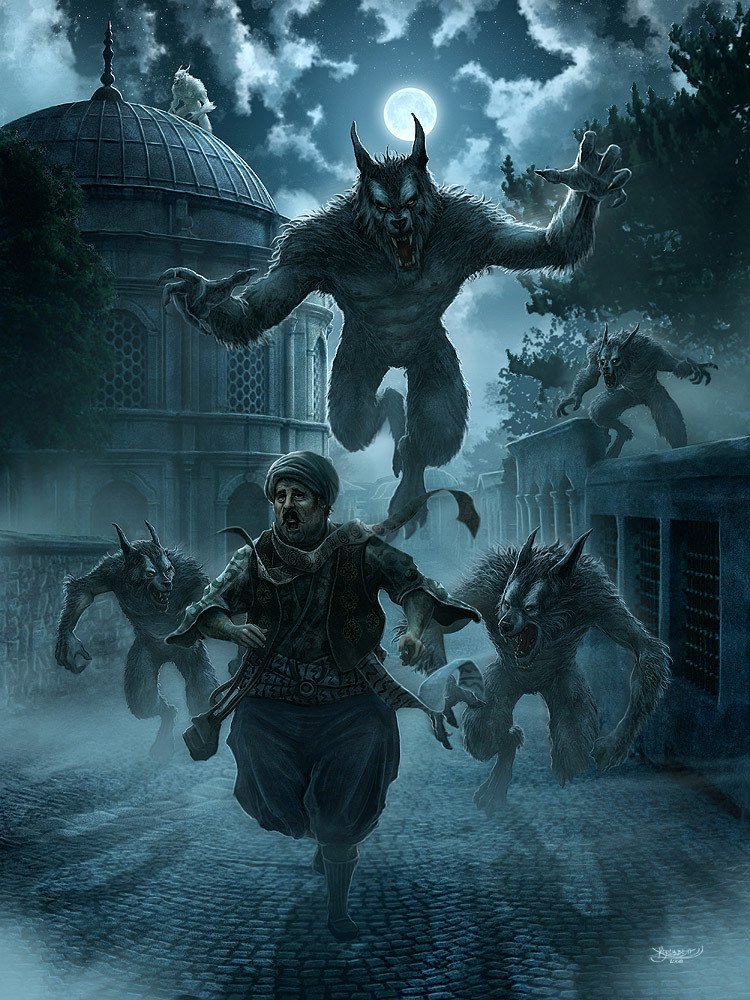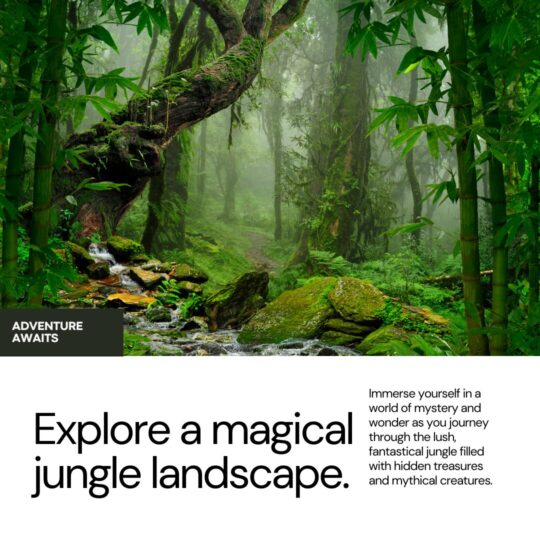
Top 5 Things I Wish For in One D&D
One D&D is “the start of a new adventure for Dungeons & Dragons” according to Jeremy Crawford, game design architect for D&D. The announcement of this new step into D&D’s history begins with several different people explaining why D&D is special. Upon seeing these first few moments you might suspect this is the next edition of D&D, the next generation, and you’d be half right. This next step in the evolution of Dungeons & Dragons is called One D&D and unlike you might first expect it’s not changing the rules of fifth edition D&D — it’s adding to them. Wizards of the Coast says they like where the game is and they want to continue building a robust RPG system with the 5E mechanics.
It’s just D&D
In the announcement video for One D&D, Jeremy Crawford and Chris Perkins in particular emphasized their desire to listen to the community in building this new framework for D&D. As such, Wizards of the Coast will be delivering regular, consistent content for playtesting and responses. To kick off this exciting new journey I wanted to share some ideas I had for my top five items on my wish list of things I’d like to see in One D&D.
5. Support for New Genres or Double Down on Fantasy
D&D has always been a game of fantasy and that’s one of the key elements that drew me into the game in the first place. However, as I’ve grown and experienced a broader swath of different RPG rulesets I realized D&D is truly grounded in fantasy. It’s not like this is a surprise or anything. The core rulebook literally says D&D is a game based in pulp fantasy.
I’ve found myself consistently wandering to other game systems especially in the indie RPG scene because there are some elements D&D simply doesn’t account for in the rules as they stand now. Much of D&D’s robustness stems from its strong theming, crunchy rules and interwoven mechanics. A big reason I gravitate to other games is because I like to play in a plethora of genres — more genres than D&D can currently support.
When it comes to RPGs I tend to gravitate toward systems with more flexibility in genre. Things like Cypher System, Powered by the Apocalypse and Legend of the Lost Ballad come to mind. I also really like highly specialized systems with a clear genre and story type in mind, something like Animon Story, Dragon Age RPG or Thirsty Sword Lesbians.
The thing with D&D is it tries to be too much and too broad without ever really doffing the shackles binding it to fantasy. Pulp fantasy is a broad niche but it’s a niche nonetheless. I’ve heard many stories of frustrated players and Dungeon Masters alike where genre expectations clash. These usually happen when a DM wants to tell a certain type of story in a specific setting and a player wants to bring in something from an official source that doesn’t mesh with the setting at hand. This results in a DM who disallows supported options and a player frustrated their super cool, favorite thing isn’t usable in a particular game.
This could be solved one of two ways. WotC can either double down on fantasy and market D&D as a broad fantasy system with a variety of adaptations and options not always allowed in every game or open the whole thing up and make it more generic, something Open Legend seemed to attempt but without a great deal of success.
I believe D&D started to lean into the former idea quite a bit with Van Richten’s Guide to Ravenloft especially. Really selling the notion of guiding players and DMs through crafting a dark fantasy game was a phenomenal development for the series, but sadly many of WotC’s more recent attempts have felt a bit half-hearted or one note. (Looking at you, Strixhaven.)
Either way, D&D’s identity has become muddled in my mind, without really opening up. If WotC wants to make adaptations and rules for superheroes, sci fi, kids on bikes, supernatural horror or whatever else then I’m here for it. If they’d rather double down on fantasy and helping support players develop rich, unique fantasy settings then I’d love more books like VRGTR for One D&D.
4. More Rules & Support for Pets & Companions
D&D has hit this note a few times throughout 5E’s lifespan by trying to add hirelings, sidekicks, pets and the like. Sadly they haven’t quite hit their stride here. For sake of language I’ll refer to pets, sidekicks and additional characters as “companions” for this section.
A big part of this is D&D’s lack of development for companions. Usually when I see players with a companion for their character they have a very specific idea for who the companion is and what they can do. The companions often become fully fleshed out characters in their own right. Whether Trinket the bear from Critical Role or a Robin for Batman, companions bring new life to a story. They often allow their main heroes to express themselves and explore new emotions or story beats by virtue of having a companion.
There are a few avenues I think could be taken here. One of the first ideas is to add more companion subclasses and possibly even add a whole new class where the premise is the character is actually two characters in one, a Companion class if you will. For such a class a player would make two characters instead of one. Then, perhaps in the vein of the warlock, the class is heavily customized to allow for martial prowess, magic, both or even diplomacy — all revolving around feat-like abilities developed at key levels similar to Eldritch Iinvocations. Regardless of whether the player defined the companions as a hireling, parent, pet or some other relationship, this relationship would be the core mechanic of the class but the flavor would be entirely up to the player.
Another idea for companions would be adding feats to grant them then perhaps additional feats to build from the first, allowing the companion to grow with the main character. Part of the problem with beast companions is they don’t really level up consistently with their ranger characters. Giving pets leveling and developments alongside the character would make for engaging play whether you use feats or not. [NERDITOR’S NOTE: Sidekicks from Tasha’s Cauldron of Everything present a terrific system for these sorts of companion characters, which includes advancement, but the idea never really seemed to catch on among players.]
A third option takes a page from one of my favorite RPGs, Animon Story. With Animon Story pets are developed in depth by choosing traits and features. I think D&D could benefit strongly from such a system and I could even see a Companion class possibly having a transformation sort of subclass where the companion transforms during combat then returns to a base form afterwards.
Mounts, pets, hirelings, spouses — any number of companion characters could benefit from more robust rules for companions in the game and I would love to see One D&D flesh out this aspect.
3. More Robust Options for Martial Characters
One of my favorite video games of all time is Guild Wars 2, where your character’s abilities and play dynamics change depending on your equipped weapons. A character wielding a two-handed hammer feels wildly different from a character fighting with twin daggers (as they should). Two characters might be the same class and have all of the same talents but their core abilities and playstyles change depending on what weapons are equipped.
This is something I’ve heard people complain about for a long while. D&D martial combat simply isn’t as fun as magic because there just aren’t options to make it interesting or engaging.
When it comes to weapon fighting I do believe we got some great strides forward with the weapon mastery feats (polearm master, piercer and so forth). We need even more of this and I think if those abilities encouraged movement (and forced movement of targets like we saw in 4E D&D) it would be a big help.
An option to help this might be including some sort of rock/paper/scissors mechanic like Fire Emblem. Maybe adjust what types of melee weapons a character gains proficiency with by category like in Dragon Age RPG. Another idea could be giving more classes (including magical classes) mechanically viable weapons features.
In general, fighting with martial weaponry and especially unarmed combat have really fallen by the wayside with D&D outside of the monk class and I think we could do with some more interesting swords, smashers and stabbies.
2. No More “Dead” Levels
One thing that really frustrates me is when I hear players talk about having a dead level coming up. It feels wrong to me and unfun how the prospect of leveling up your character might result in a dead level. Dead levels are those where your character doesn’t gain a new ability or feature. They gain hit points, sure. They might gain a spell slot, but they don’t really get much that’s particularly interesting.
I suspect part of the frustration with dead levels isn’t only the lack of a feature but it’s the lack of customization among the features you have. I suspect if players felt like they truly had agency in their character’s development instead of just always getting the same thing as everyone else in their class then this would make those dead levels sting a little less.
What I’d propose to fix this in One D&D would be to grant players a list of features to choose, possibly something like how Tasha’s Cauldron of Everything offered additional options for classes. Present more of those and let each player choose which one or two they want when their character levels up.
When players feel like they have control over their character’s development this goes a long way to improving their experience and if a player has options all along the way of their character’s development — even if it’s a minor feat or something — this will dramatically improve the game for many.
1. More Magic Systems
One of my favorite optional rules for D&D is using spell points instead of spell slots, but D&D Beyond has no support for this system and to even find how it works you have to comb through the Dungeon Master’s Guide. This is a shame because magic systems are one of the coolest elements of fantasy.
VRGTR was very close to hitting on this point when talking about adjusting magic flavor for a horror game but I think WotC could and should take it a step further. Whether it’s Avatar: The Last Airbender, Mistborn, Fullmetal Alchemist, The Earthsea books, Dresden Files or anything else, flavorful magic systems build robust and interesting worlds.
Sadly, no matter what interesting and flavorful genre you play in, magic remains woefully the same in D&D. Spell slots for days. Opening up new options for interesting magic systems individualized to certain settings would wildly improve the magic experience for everyone.
What do you think?
Are you excited for One D&D as much as we are? What’s on your wish list for this new evolution of the game we all love? Let us know by commenting here or connecting with us at Nerdarchy the Facebook page.
Featured image — Wizards of the Coast is building the next generation of Dungeons & Dragons and they need your help refining it! Download One D&D playtest materials, give them a read or try them out in your home game and then provide feedback. Click here to get started!









No Comments